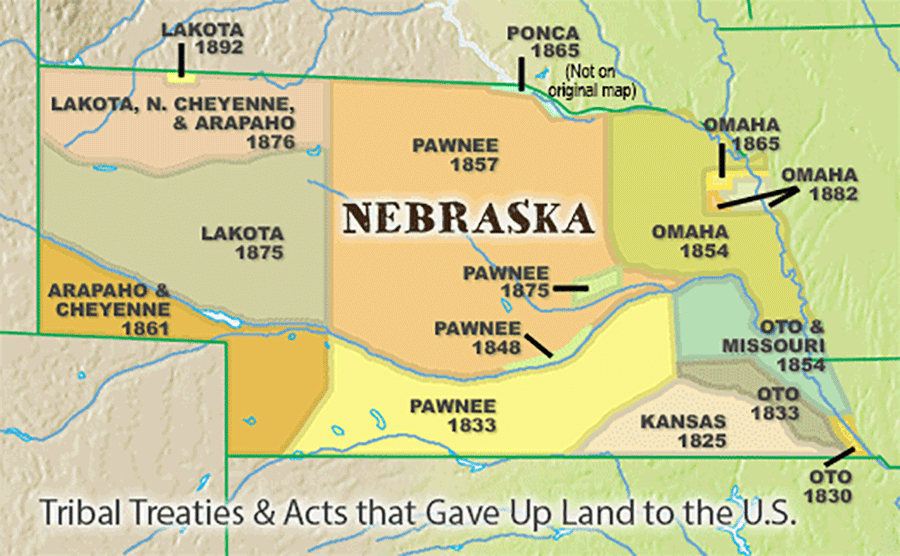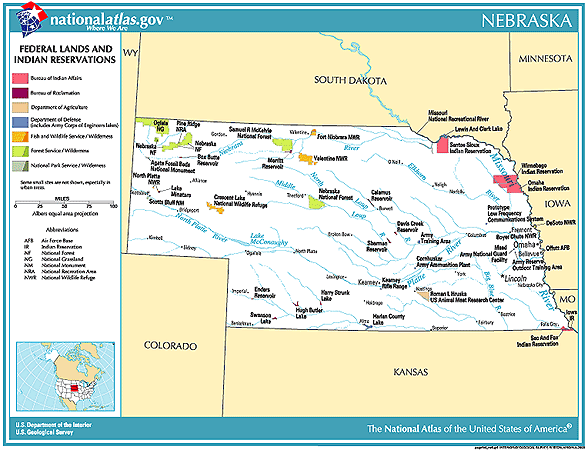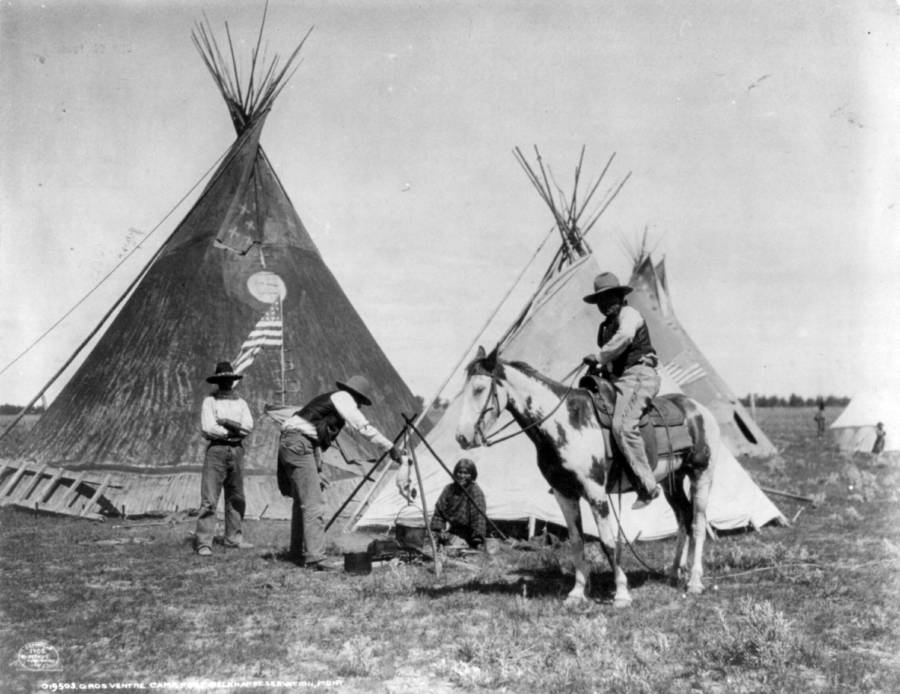Land of the Brave, Land of the Free: A Look at Nebraska’s Native American Reservations
Land of the Brave, Land of the Free: A Look at Nebraska’s Native American Reservations

Nebraska, known for its vast plains and rolling hills, is also home to a vibrant Native American community. While the state’s history is deeply intertwined with the history of its indigenous peoples, it’s easy to forget that these lands were once solely theirs. Today, six federally recognized tribes call Nebraska home, each with its own unique story and rich cultural heritage. But what’s life like on these reservations? What challenges do they face, and what are their hopes for the future? Let’s dive in and explore the lives of Nebraska’s Native American communities.
A Legacy of Resilience
Related Articles: Land of the Brave, Land of the Free: A Look at Nebraska’s Native American Reservations
- Uncover the Intriguing World of Indian Reservations in Arizona
- Uncover the Hidden Gems: Exploring Indian Reservations in Tulsa, Oklahoma
- From Stevens Point To Rosebud: A Journey Through History And Culture
- Uncover the Hidden Gems of Arizona's Indian Tribes in Parker
- The Ballad Of The Reservation: Unraveling The Story Behind The Iconic Song
The story of Native Americans in Nebraska is one of resilience, adaptation, and a constant struggle for self-determination. For centuries, these tribes thrived on the land, living in harmony with nature and developing their own distinct languages, traditions, and beliefs. However, the arrival of European settlers brought with it a wave of displacement, forced assimilation, and broken treaties. The impact of these historical injustices continues to be felt today, shaping the lives of Native Americans on reservations across Nebraska.
The Six Nations: A Glimpse into Diversity
Nebraska’s six federally recognized tribes – the Omaha, Winnebago, Ponca, Santee Sioux, Oglala Lakota, and the Pawnee – each boast a unique cultural heritage and history.
-
The Omaha: Known for their strong sense of community and their vibrant beadwork, the Omaha Tribe have a long history in eastern Nebraska. Their reservation, located near Macy, is home to the Omaha Nation Museum, which showcases their rich cultural heritage.

The Winnebago: These skilled hunters and fishermen have a deep connection to the land and water. Their reservation, situated near Winnebago, is a testament to their resilience and adaptability.
-
The Ponca: Known for their strong warrior traditions and their intricate pottery, the Ponca Tribe have a long history of resistance and resilience. Their reservation, located near Niobrara, is a place where their culture thrives.
-
The Santee Sioux: These proud warriors and skilled horsemen have a long history of fighting for their rights and their way of life. Their reservation, situated near Niobrara, is a place where their language, traditions, and culture are passed down through generations.
-
The Oglala Lakota: The Oglala Lakota, known for their strength and courage, have a reservation that spans across the Nebraska-South Dakota border. Their culture, rich in storytelling and traditional ceremonies, is a source of pride and inspiration.

-
The Pawnee: Known for their intricate storytelling and their skilled craftsmanship, the Pawnee Tribe have a reservation located near Genoa. Their history is marked by both hardship and triumph, and their culture continues to thrive.

Challenges and Opportunities: A Look at the Present
Despite their resilience, Nebraska’s Native American communities face a number of challenges, including:
-
Economic disparity: Unemployment rates on reservations are often significantly higher than the national average, leading to poverty and limited access to essential services.
-
Lack of infrastructure: Many reservations lack adequate housing, healthcare, and educational opportunities, creating a vicious cycle of poverty and limited opportunities.
-
Environmental concerns: The impact of climate change and environmental degradation poses a significant threat to Native American communities, impacting their traditional way of life and their access to natural resources.
However, amidst these challenges, there are also signs of hope. Many Native American communities are actively working to:
-
Promote economic development: Through initiatives like tribal casinos, businesses, and tourism, reservations are creating new opportunities for economic growth and self-sufficiency.
-
Strengthen cultural preservation: Through language revitalization programs, cultural festivals, and educational initiatives, Native American communities are working to preserve their traditions and pass them down to future generations.
-
Advocate for their rights: Through political activism and legal challenges, Native American communities are fighting for their rights and demanding recognition of their sovereignty.
The Future: A Path of Self-Determination
The future of Nebraska’s Native American communities is uncertain, but one thing is clear: they are determined to shape their own destiny. By embracing their cultural heritage, promoting economic development, and advocating for their rights, they are working to create a brighter future for themselves and their children.
FAQ: Indian Reservations in Nebraska
Q: How many Native American reservations are there in Nebraska?
A: There are six federally recognized tribes in Nebraska, each with its own reservation.
Q: What are the names of the six tribes?
A: The six tribes are the Omaha, Winnebago, Ponca, Santee Sioux, Oglala Lakota, and the Pawnee.
Q: What are some of the challenges faced by Native American communities in Nebraska?
A: Some of the challenges include economic disparity, lack of infrastructure, and environmental concerns.
Q: What are some of the opportunities for Native American communities in Nebraska?
A: Opportunities include promoting economic development, strengthening cultural preservation, and advocating for their rights.
Q: How can I learn more about the history and culture of Nebraska’s Native American tribes?
A: You can visit tribal museums, attend cultural events, and read books and articles about Native American history and culture.
Q: What can I do to support Native American communities in Nebraska?
A: You can support Native American-owned businesses, donate to organizations that support Native American causes, and educate yourself about the issues facing Native American communities.
The journey of Nebraska’s Native American communities is a testament to their resilience, their cultural richness, and their unwavering spirit. As we move forward, it’s important to remember the history of these communities, to understand the challenges they face, and to support their efforts to achieve self-determination. The future of these communities is in their hands, and it’s a future filled with both hope and promise.

Closure
Thus, we hope this article has provided valuable insights into Land of the Brave, Land of the Free: A Look at Nebraska’s Native American Reservations. We appreciate your attention to our article. See you in our next article!


